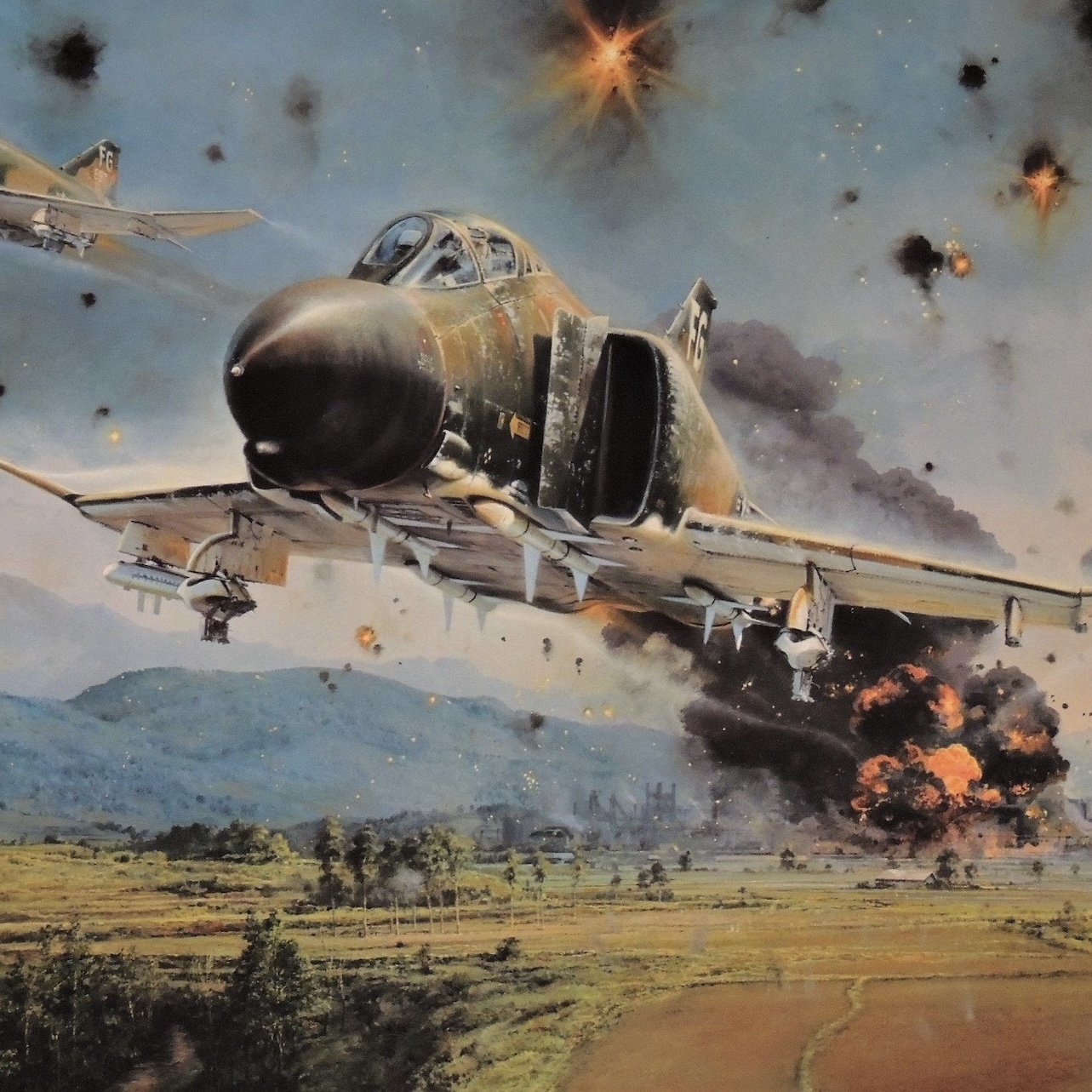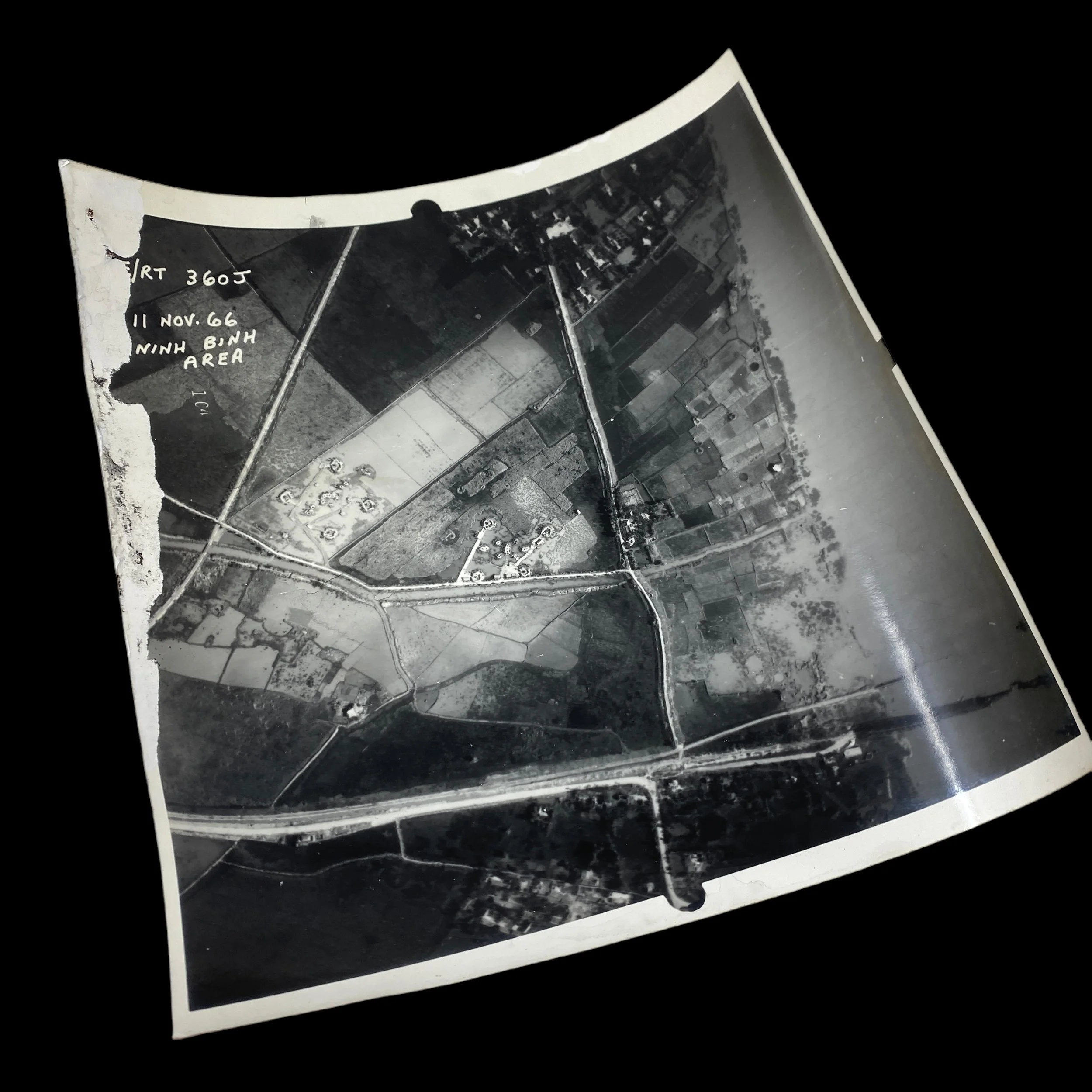RARE! 1966 Vietnam War "TYPE ONE" Operation Rolling Thunder U.S. 2nd Air Division Aircraft Aerial Mission Photograph (Bombing Mission: NINH BINH AREA)










RARE! 1966 Vietnam War "TYPE ONE" Operation Rolling Thunder U.S. 2nd Air Division Aircraft Aerial Mission Photograph (Bombing Mission: NINH BINH AREA)
Comes with a hand-signed C.O.A.
*TYPE ONE Vietnam War Operation Rolling Thunder aerial mission photographs are extremely rare and seldom surface in the public market. This is a once-in-a-lifetime chance to own a rare piece of U.S. Air Force Vietnam War history from the most famous air offensive by the U.S. during the Vietnam War.
Dated: 1966
Bombing Mission: NINH BINH AREA
This extremely rare and museum-grade Vietnam War artifact is an original TYPE ONE “Operation Rolling Thunder” aerial mission photograph taken during the gradual and sustained aerial bombardment campaign conducted by the United States (U.S.) 2nd Air Division (later Seventh Air Force), U.S. Navy, and Republic of Vietnam Air Force (RVNAF) against the Democratic Republic of Vietnam (North Vietnam), China and North Korea from 2 March 1965 until 2 November 1968, during the Vietnam War.
This TYPE ONE mission photograph was developed directly from the negative image taken from the U.S. aircraft aerial camera during the mission. These Operation Rolling Thunder photographs were developed immediately after the aircraft returned to their operating airfields where the photographs were developed and used for multiple purposes. These images were first used to analyze the post-damage-assessment success of the bombing mission as well as to update any maps and counter-intelligence of the area for future missions both on land and in the air.
Operation Rolling Thunder (March 1965 through November 1968) it is estimated that the U.S. lost 922 aircraft and 1,054 killed in action, wounded, or captured. Losses for North Vietnam as estimated to be 20,000 soldiers killed, 120 aircraft destroyed, and 14 North Korean pilots killed.
The majority of strikes during Rolling Thunder were launched from four air bases in Thailand: Korat, Takhli, Udorn, and Ubon. The aircraft refueled from aerial tankers over Laos before flying on to their targets in the DRV. After attacking their targets (usually by dive-bombing) the strike forces would either fly directly back to Thailand or exit over the relatively safe waters of the Gulf of Tonkin. It was quickly decided that, in order to limit airspace conflicts between air force and naval strike forces, North Vietnam was divided into six target regions called "route packages", each of which was assigned to either the Air Force or Navy and into which the other was forbidden to intrude.
Naval strikes were launched from the aircraft carriers of Task Force 77, cruising off the North Vietnamese coast at Yankee Station. Naval aircraft, which had shorter ranges (and carried lighter bomb loads) than their air force counterparts, approached their targets from seaward with the majority of their strikes flown against coastal targets.
The panhandle of southern North Vietnam remained the primary focus of operations, and total sorties flown there rose from 3,600 in April to 4,000 in May. Slowly moving away from the destruction of fixed targets, "armed reconnaissance" missions, in which small formations of aircraft patrolled highways, railroads, and rivers, searching for targets of opportunity, were authorized. These missions increased from two to 200 sorties per week by the end of 1965. Eventually, armed reconnaissance missions constituted 75 percent of the total bombing effort, in part because the system through which fixed targets were requested, selected, and authorized was so complicated and unwieldy.
The four objectives of the operation (which evolved over time) were to boost the sagging morale of the Saigon regime in the Republic of Vietnam (South Vietnam); to persuade North Vietnam to cease its support for the communist insurgency in South Vietnam without sending ground forces into communist North Vietnam; to destroy North Vietnam's transportation system, industrial base, and air defenses; and to halt the flow of men and materiel into South Vietnam. Attainment of these objectives was made difficult by both the restraints imposed upon the U.S. and its allies by Cold War exigencies and the military aid and assistance received by North Vietnam from its communist allies, the Soviet Union, the People's Republic of China and North Korea.
The operation became the most intense air/ground battle waged during the Cold War period; it was the most difficult such campaign fought by the United States since the aerial bombardment of Germany during World War II. Supported by its communist allies, the Soviet Union and China, North Vietnam fielded a potent mixture of MiG fighter-interceptor jets and sophisticated air-to-air and surface-to-air weapons that created one of the most effective air defenses ever faced by American military aviators. This led to the cancellation of Operation Rolling Thunder in 1968.